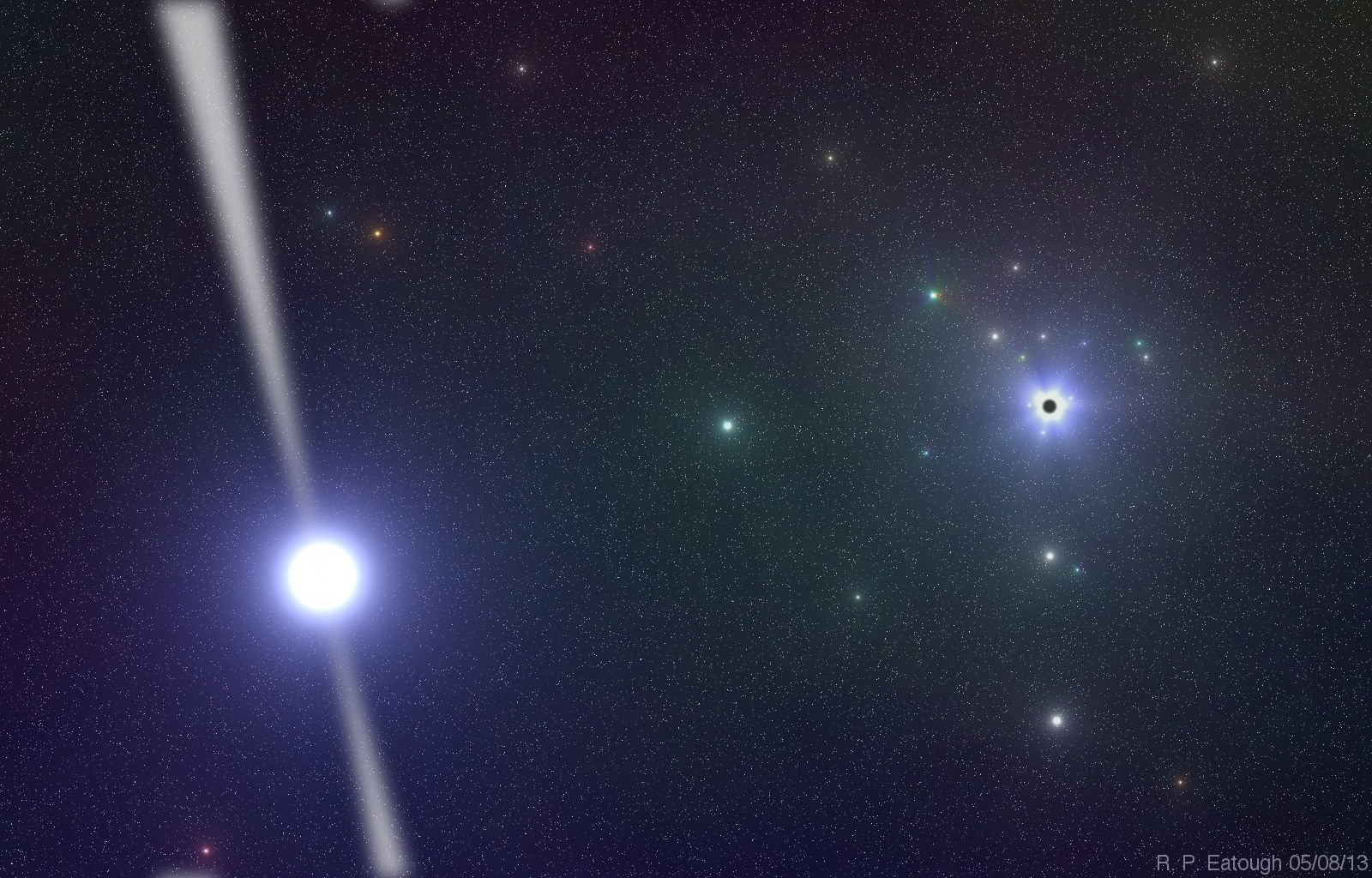Daily Image
16-08-2013Pulsar beacon shines light on black hole diet
| Submitter: | Adam Deller |
| Description: | How does the supermassive black hole candidate at the centre of the Milky Way like its lunch? Recent observations of a newly-discovered radio pulsar suggest that Sgr A* (the black hole at the Galactic Centre which is 4 million times more massive than the Sun) likes its gas nicely magnetised. This dietary analysis was possible by the discovery and follow up of PSR J1745-2900, a magnetar (ultra-magnetic neutron star formed in a supernova explosion) in the Galactic Centre region. First seen in the x-ray by the Swift and NuSTAR space telescopes, it was quickly also detected in the radio by the Effelsberg telescope, and subsequently by many others. The magnetar is separated from Sgr A* by less than half a light year in projection, which in Galactic terms is virtually on the black hole's doorstep, and multiple observational properties indicate that this is not a chance alignment. The image shows an artist's conception of PSR J1745-2900 and its surroundings, including Sgr A*. By itself this was already a thrilling discovery, since pulsar astronomers had been searching for pulsars in the Galactic Centre in vain for 40 years, and were starting to wonder whether the conditions near Sgr A* were so extreme that they might never be found. Pulsars can be used as precise cosmic clocks, and a pulsar near Sgr A* could be used to test Einstein's theory of General Relativity in a laboratory totally unlike anything available on the Earth or even elsewhere in the solar system. PSR J1745-2900 is unfortunately unsuitable for these tests - magnetars are comparatively poor cosmic clocks, and ~0.5 light years is just a little too far from Sgr A* for a very stringent test of GR. However, the discovery of PSR J1745-2900 indicates that observable pulsars do exist in the Galactic Centre, boosting hopes of discovering a more suitable candidate. Meanwhile, PSR J1745-2900 can still be used to study the Galactic Centre environment. It emits polarised radiation, and the plane of the polarisation is rotated by the Faraday effect as it travels towards us. The magnitude of the rotation is dependent on the magnetic field along the line of sight, and so observations of PSR J1745-2900 can give the strength of the magnetic field pervading the gas destined to become Sgr A*'s next snack. As reported by Eatough et al. in Nature this week, the inferred magnetic field is quite strong - by the time the gas reaches the event horizon of the black hole, the magnetic field would be hundreds of times stronger than that of the Earth, strong enough to explain the observed synchrotron emission of Sgr A*. For more information, see that following: Pulblished Nature letter: http://www.nature.com/nature/journal/vaop/ncurrent/full/nature12499.html ASTRON press release: https://www.astron.nl/about-astron/press-public/news/new-radio-pulsar-explores-feeding-habits-milky-way%E2%80%99s-massive-black-ho MPIfR press release: http://www.mpifr-bonn.mpg.de/461331/news_publication_7502957?c=2169 |
| Copyright: | Ralph Eatough / MPIfR |
| Tweet |  |
